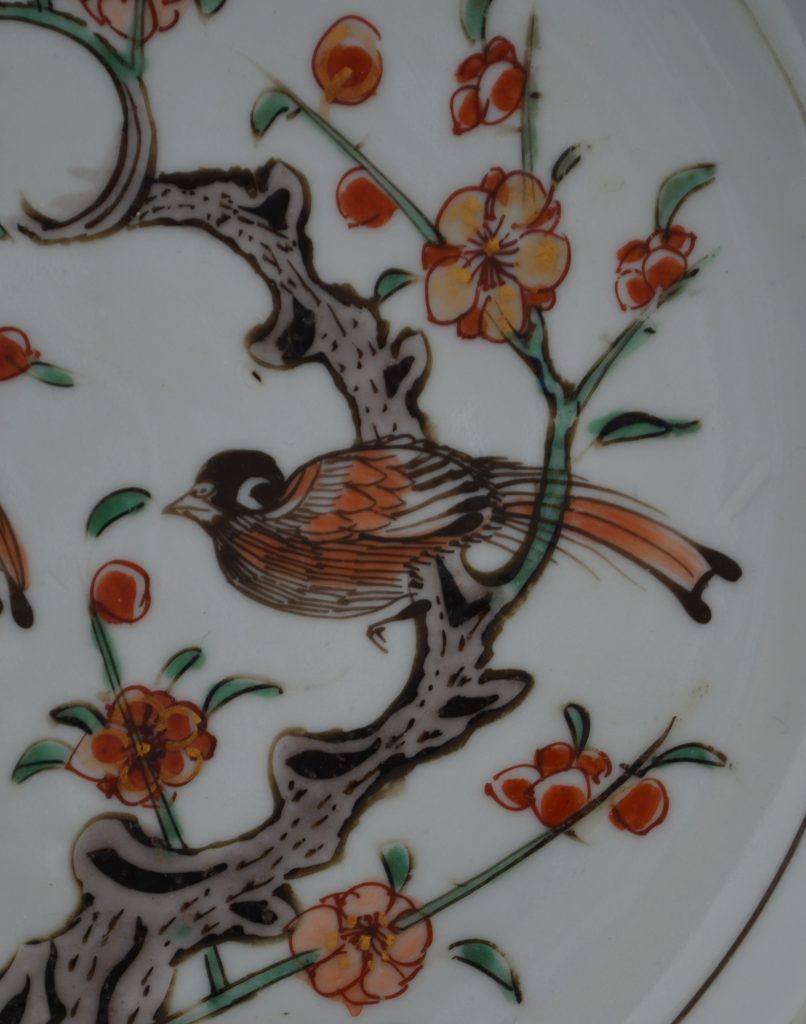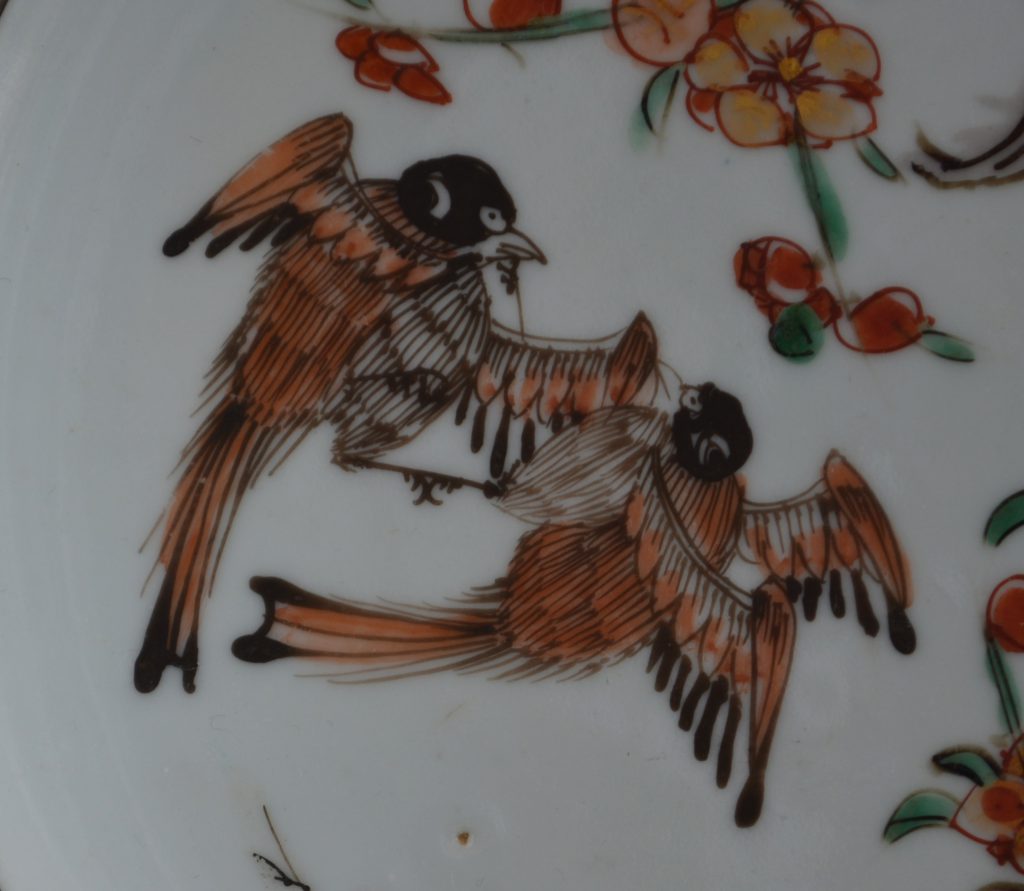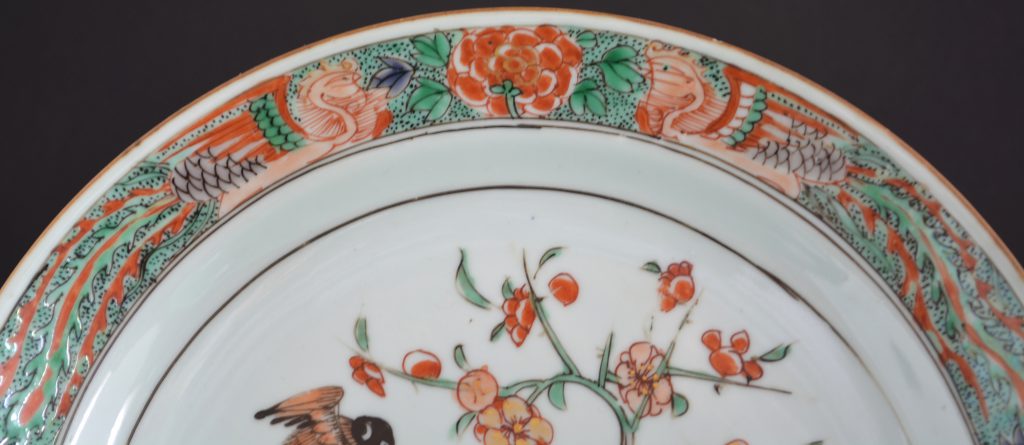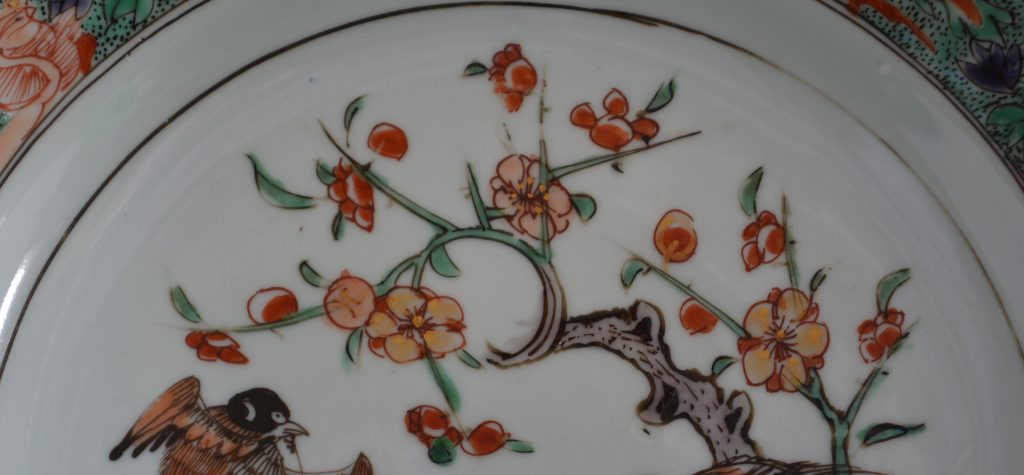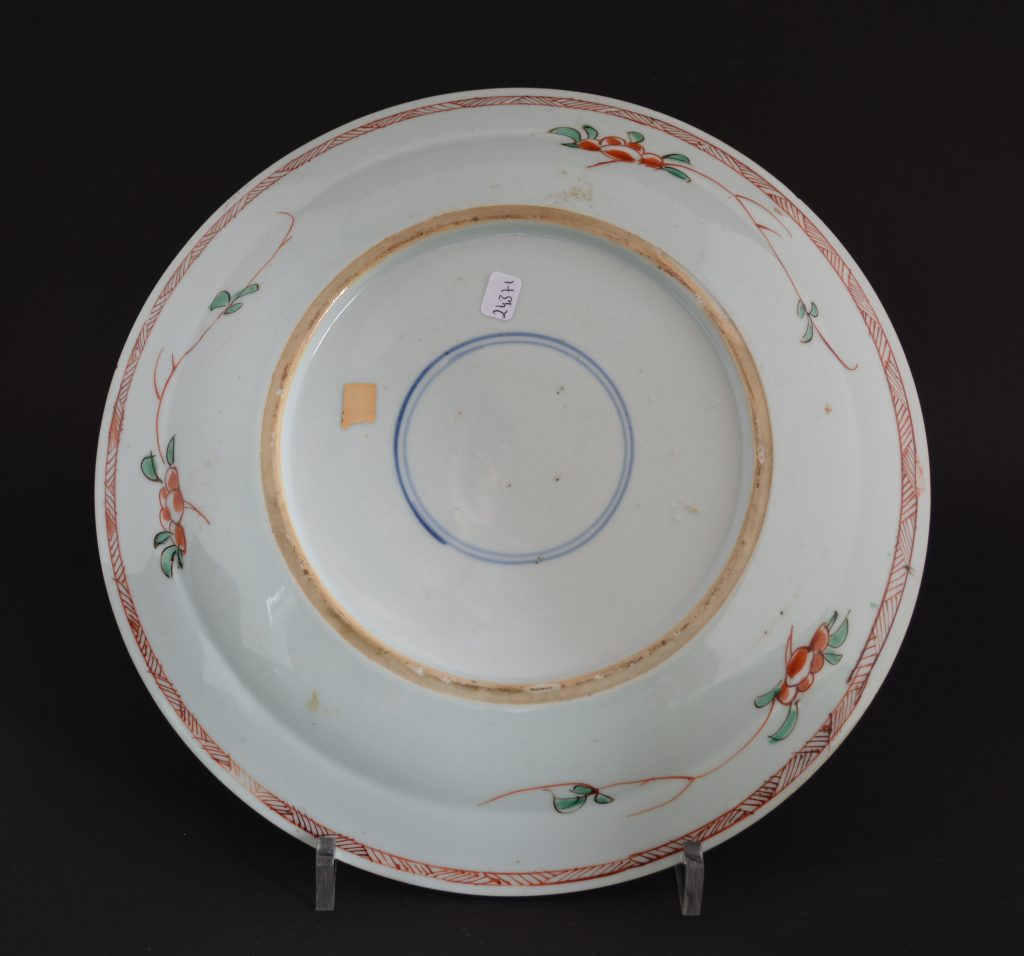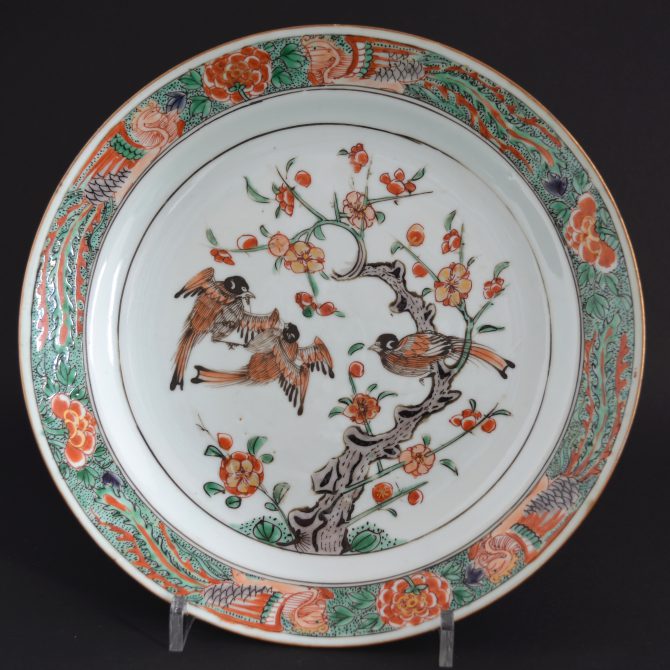
Kangxi 1662 – 1722. Famille Verte Decoration Porcelain Plate.
A Famille Verte Porcelain Plate, Late Kangxi c.1700-1720. Decorated with Two Oriole Fighting Over an Insect with Another Oriole Watching From the Branch of a Gnarled Prunus Tree.
SOLD
- Condition
- In excellent condition, one minute frit to the rim c.1 x 1mm, minute shallow chips to the footrim.
- Size
- Diameter : 24 cm (9 1/2 inches)
- Provenance
- N/A
- Stock number
- 24371
Information
Oriole :
The Oriolidae are represented in China by six species, all belonging to the genus Oriolus. These include the Eurasian Golden Oriole (the oriole of Western tradition) in the far west of China and four species in the south of China, three of which are found only in Yunnan. The oriole, because of it`s beautiful song, is the bird of joy and music. Of the Five Human Relationships the oriole symbolises friendship.
Phoenix / Fenghuang :
Fenghuang are mythological birds of East Asia that reign over all other birds. The males are called Feng and the females Huang. In modern times, however, such a distinction of gender is often no longer made and the Feng and Huang are blurred into a single feminine entity so that the bird can be paired with the Chinese dragon, which has male connotations. The Fenghuang is also called the `August Cockerel` since it sometimes takes the place of the cockerel in the Chinese Zodiac. In the West, it is commonly referred to as the Chinese phoenix. The Fenghuang has very positive connotations. It is a symbol of high virtue and grace. The Fenghuang also symbolizes the union of yin and yang. In ancient China, they can often be found in the decorations for weddings or royalty, along with dragons. This is because the Chinese considered the dragon and phoenix symbolic of blissful relations between husband and wife, another common yin and yang metaphor. In some traditions it appears in good times but hides during times of trouble, while in other traditions it appeared only to mark the beginning of a new era. In China and Japan it was a symbol of the imperial house, and it represented `fire, the sun, justice, obedience, and fidelity`.
